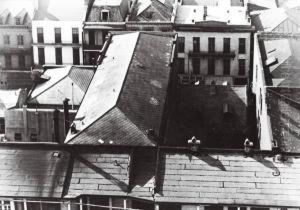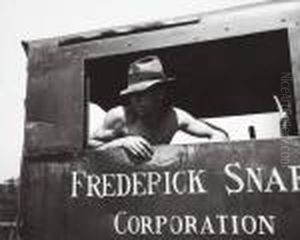Peter Sekaer Paintings
Peter Sekaer was a notable American photographer of Danish birth, recognized for his significant contributions to documentary photography during the 1930s and 1940s. Born on December 19, 1901, in Copenhagen, Denmark, Sekaer immigrated to the United States in 1918, seeking new opportunities. Initially, he pursued a career in painting and attended the Art Students League of New York, where he was influenced by the bustling art scene of the city and the burgeoning modern art movements of the early 20th century.
Sekaer’s artistic direction shifted after he developed an interest in photography in the late 1920s. He became an apprentice to the renowned photographer Berenice Abbott and assisted in her project to document New York City, which profoundly influenced his approach to photography. His work during this period was characterized by a keen eye for the social conditions of his time, capturing the essence of urban life with a particular focus on the hardships faced by ordinary people during the Great Depression.
In the 1930s, Sekaer joined the Resettlement Administration (later the Farm Security Administration [FSA]), where he worked alongside other prominent photographers such as Walker Evans and Dorothea Lange. His assignments for the FSA took him across the United States, documenting rural and urban poverty, the impact of the New Deal, and the changing American landscape. His photographs from this period are notable for their humanistic approach and are considered an important part of the documentary tradition in American photography.
Despite his significant contributions, Peter Sekaer's work was somewhat overshadowed by that of his more famous contemporaries. It wasn't until after his untimely death on July 23, 1950, that his photographs gained broader recognition. Today, Sekaer is celebrated for his ability to capture the resilience and dignity of his subjects during one of America's most challenging eras. His photographs are included in the collections of major institutions, and his legacy is that of a compassionate observer who used his camera to document the reality of the American experience with empathy and insight.

